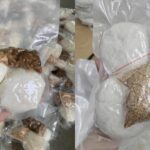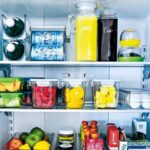1 Store Food in Separate Containers
Utilize plastic food storage containers to keep your food neat and tidy. For instance, certain foods can be stored in airtight boxes, thus preventing spillage or falling out when you open the fridge door.
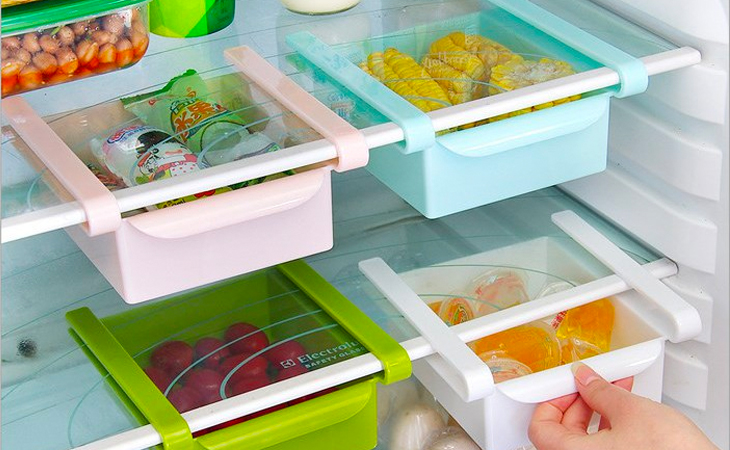
2 Hang Food Bags on Hooks
To make use of dead space inside the fridge, you can hang partially used food bags on the shelves, as shown in the image below.
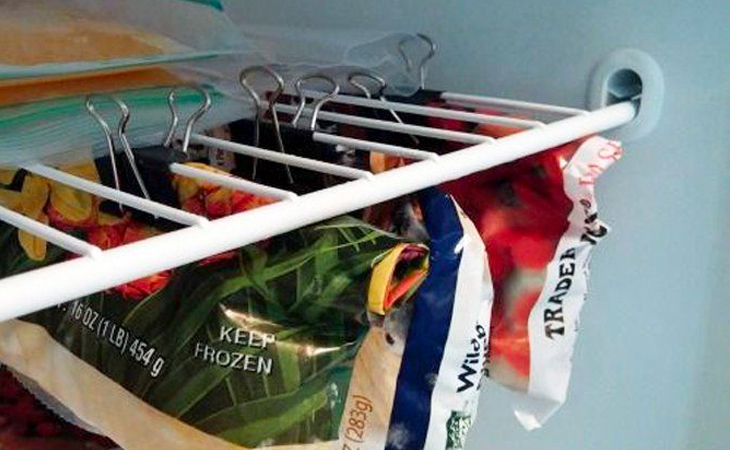
3 Use Magnetic Bottom Containers
The metal body of the fridge door can hold magnets. Therefore, you can use food storage containers with magnetic bottoms, sticking them to the door. This method helps you expand storage space for small items like chili peppers, dried fruits, and cookies.
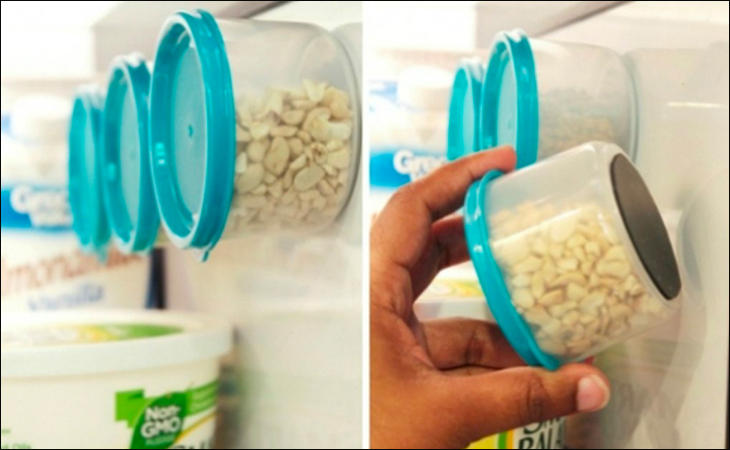
4 Store Vegetables in Glass Jars
Vegetables can be stored in glass food containers or jars to keep them organized and improve the aesthetic appeal of your fridge interior.
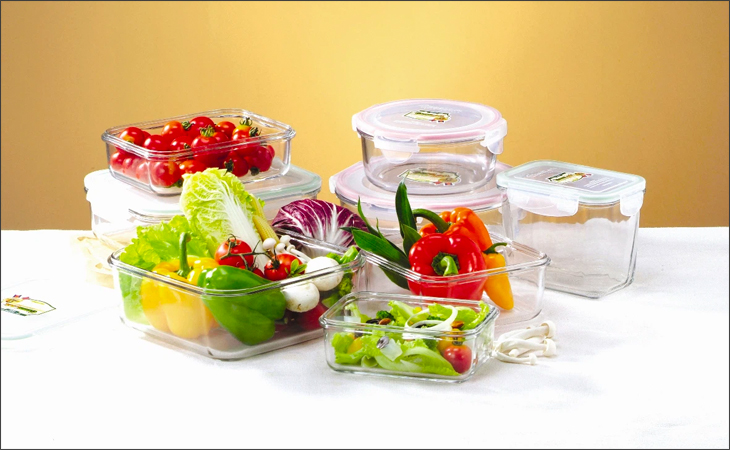
5 Use Round Trays for Prepared Food
For prepared meals, spices, and snacks, use round trays for convenient organization and easy access.
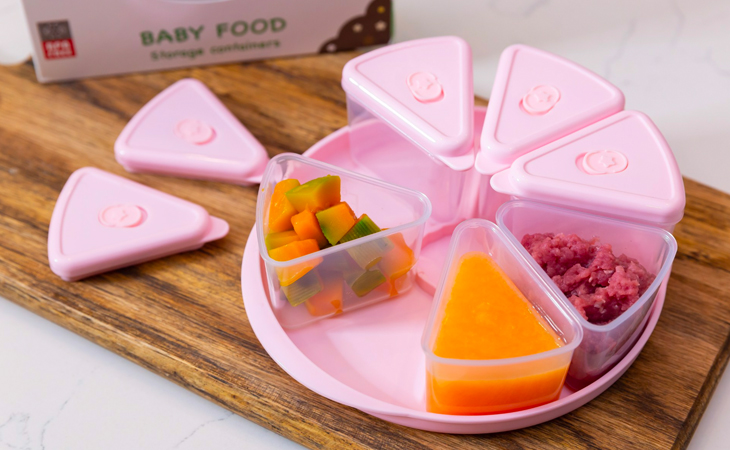
6 Use a Separate Container for Bacon
After marinating bacon, if you’re not cooking it right away, store it in an airtight container to prevent odor absorption and avoid liquid leakage inside the fridge.
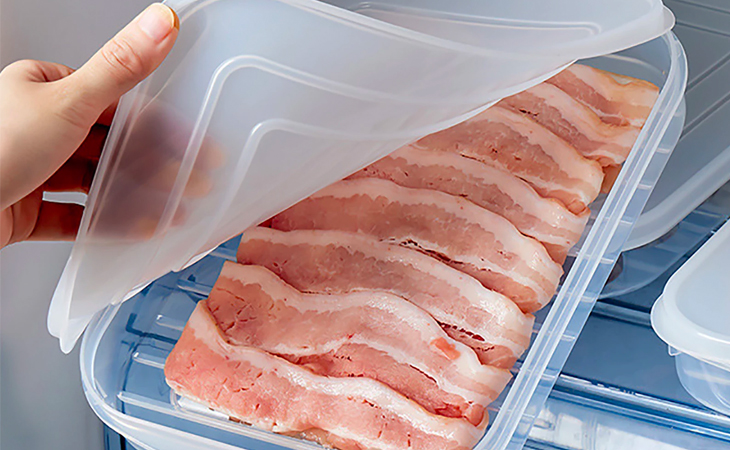
7 Utilize Egg Trays for Sauce Bottles
If you have many sauce bottles, use egg trays to organize them neatly inside the fridge. This will reduce the clinking noise made by the bottles when you open the door. Additionally, for almost empty bottles, invert them so that the remaining sauce settles at the bottle mouth, eliminating the need to shake or squeeze.
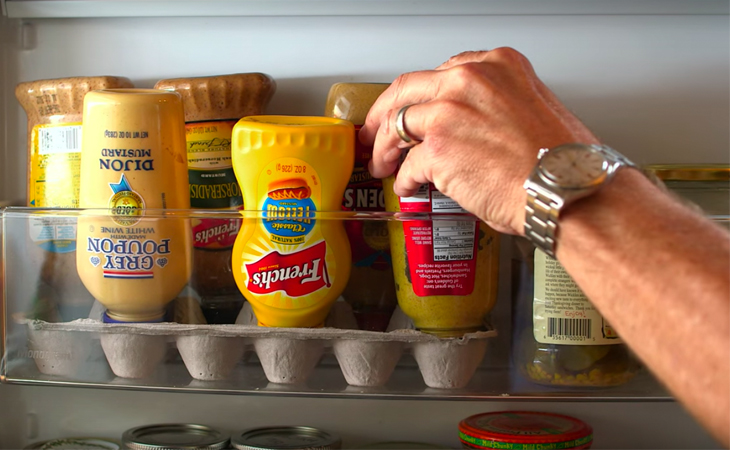
8 Maximize Space for Bottles and Jars
The compartments on the fridge door are designed for convenient bottle storage. You can even use cardboard dividers to create more space for additional bottles and jars.
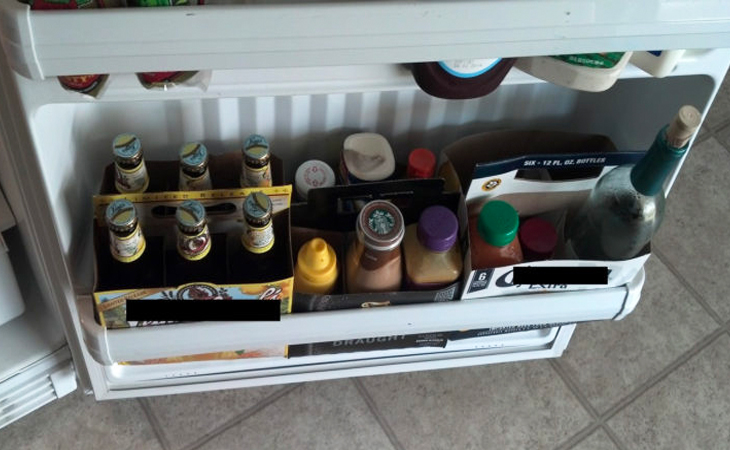
9 Store Eggs in a Covered Container
If you keep eggs in the fridge, use a covered egg container to safely stack other lightweight foods on top without worrying about crushing the eggs.
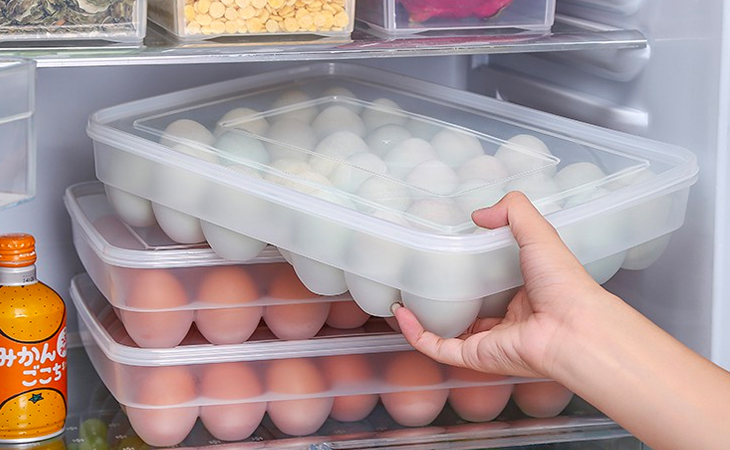
10 Group Together Foods That Don’t Need Extreme Cold
Some foods, like certain vegetables and eggs, don’t require extreme cold for preservation. Group these together in a specific area within the fridge compartment.
By understanding food characteristics, you can efficiently categorize and organize your food without compromising quality, thus freeing up space for other items.
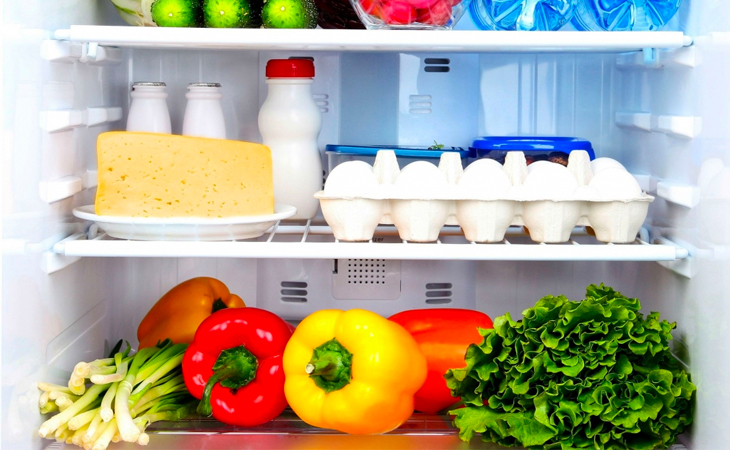
11 Use a Separate Compartment for Perishables
Not everyone remembers food expiration dates. To avoid waste and optimize storage space, dedicate a compartment for perishables that need to be consumed first.
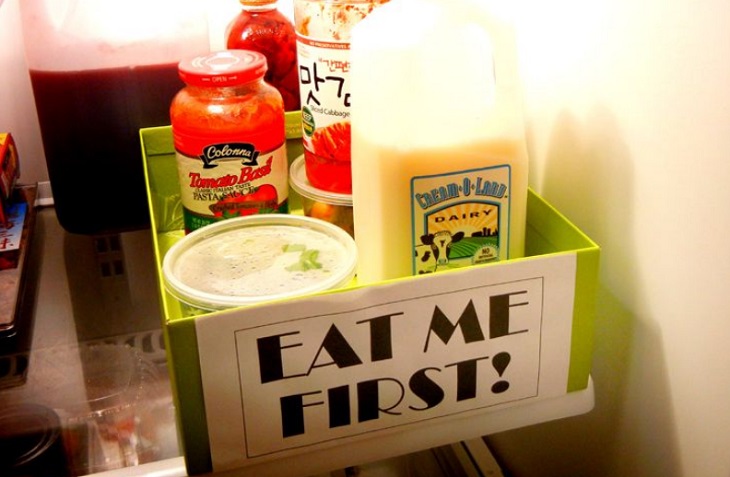
12 Designate a Snack Area
If you enjoy snacks, assign a specific tray and area in the fridge for them. This way, you can easily access your snacks without rummaging through the entire fridge.
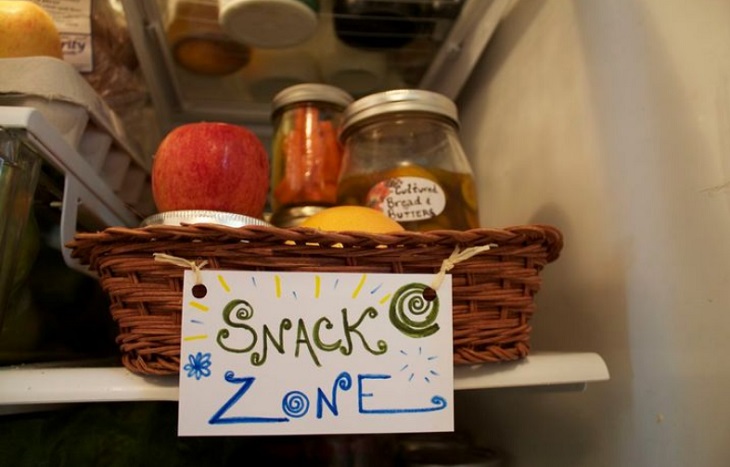
13 Use Dividers in the Freezer
Food in the freezer can also be organized using dividers. This method allows you to categorize and neatly arrange your food, making it easier to retrieve and restock.
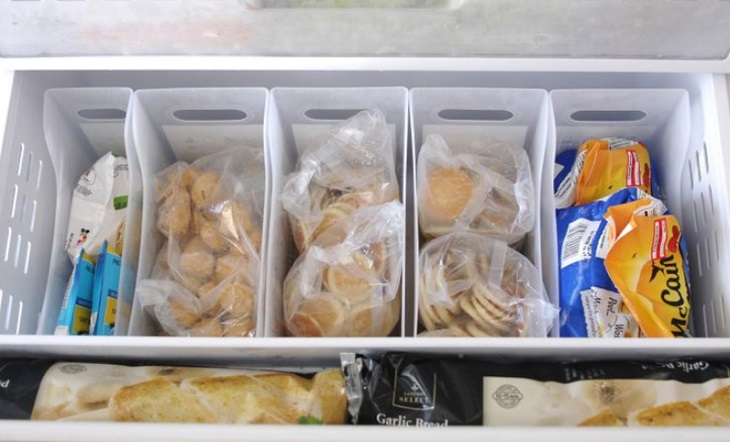
14 Label Door Compartments
Similar to the previous tips, you can label each door compartment. This arrangement will help you quickly locate spices and beverages.
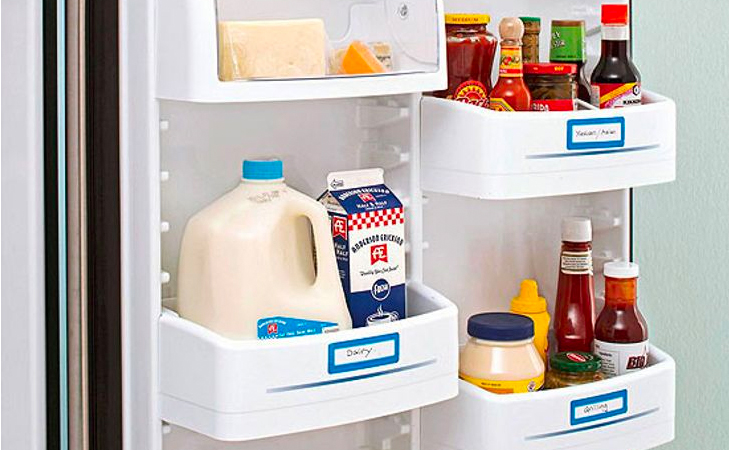
15 Label Each Compartment
First, categorize your food into groups, then place each group into a designated compartment. Next, label these compartments with the corresponding food group names. Finally, print and stick these labels onto the trays. This system enables you to quickly identify and retrieve food items when needed.
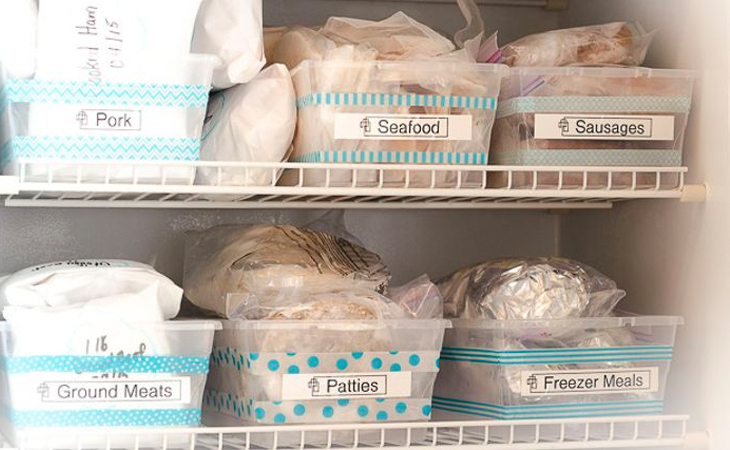
16 Line the Fridge Shelves
Lining the fridge shelves helps prevent odor absorption from food leaks. You can use newspaper or decorative cloth liners to add a stylish touch to your fridge while keeping it clean.
These liners are easy to replace, ensuring that the interior of your fridge remains clean and odor-free.
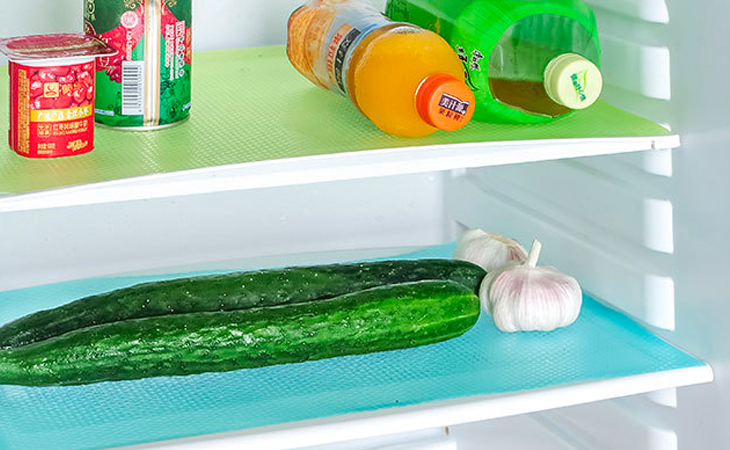
17 Teach Children Organizational Habits
For families with young children, instill the habit of keeping the fridge neat and encourage them to clean the fridge after retrieving food. This will reduce your cleaning time and help you keep track of items to buy during grocery shopping.
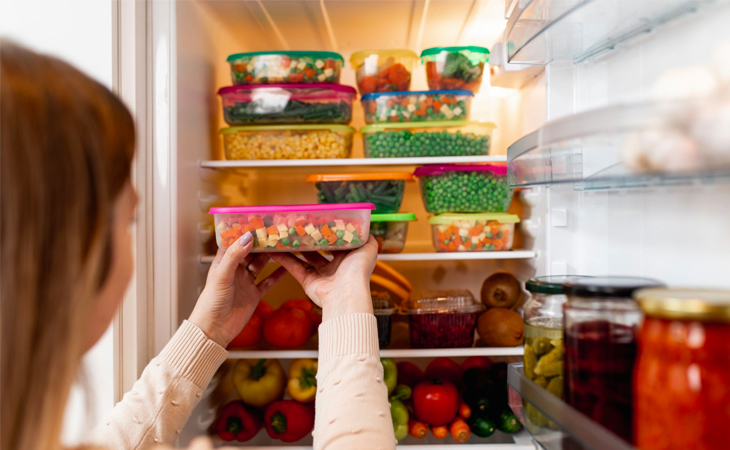
18 Take Photos of Fridge Contents
Before shopping for groceries, use your phone to snap pictures of your fridge’s interior and its contents. This practice helps you choose suitable items and avoid overbuying what you already have.
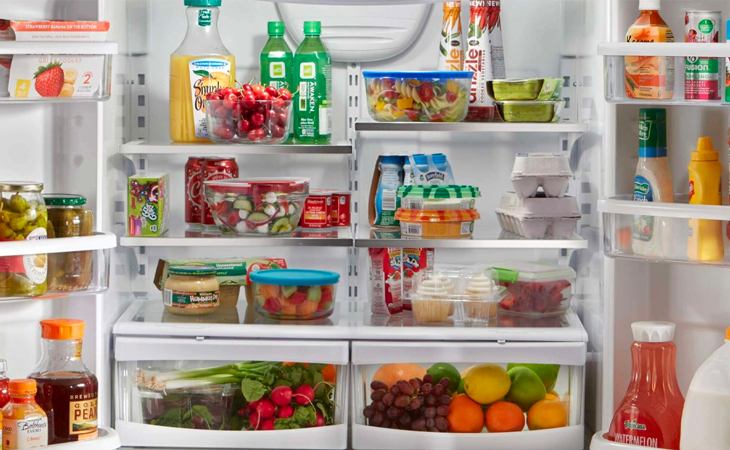
19 Use Bottle Neck Tags for Wine Bottles
If you’re short on fridge space and can’t store wine bottles upright, use bottle neck tags or clips to secure them horizontally, allowing you to store more bottles.
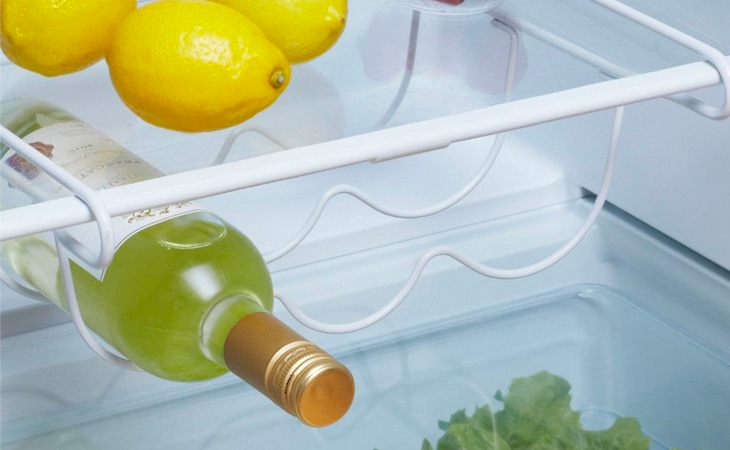
20 Make External Fridge Notes
This method is quite interesting. You can make notes outside the fridge in the form of a diagram, helping family members locate specific food items. Additionally, this habit helps you monitor expiration dates, ensuring timely consumption and creating more storage space.
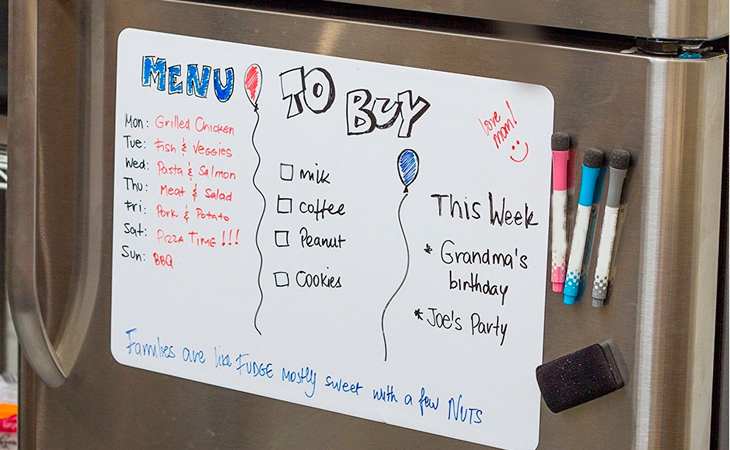
21 Additional Tips for Food Storage
When storing food in the fridge, keep the following in mind:
- Choose and adjust the temperature setting to suit the stored food and prolong the fridge’s lifespan. Maintain temperatures of 5°C or lower in the cooling compartment and -18°C or lower in the freezer.
- Store food in airtight containers, zipper bags, or sealed jars to reduce nutrient loss and prevent unpleasant odors when opening the fridge.
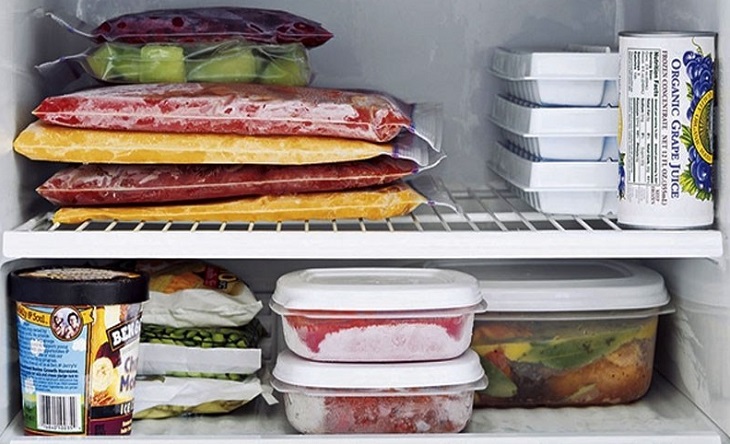
- Ensure food is dry (meat, fish, vegetables, fruits) before storage to prevent moisture buildup and bacterial growth, which can spoil food and create foul odors.
- Avoid using plastic bags of unknown origin for food storage, as they may contain toxic substances that can seep into the food and affect your health.
- Refrain from storing milk on the door due to unstable temperatures. Consider investing in a fridge with Door Cooling technology to address this issue.
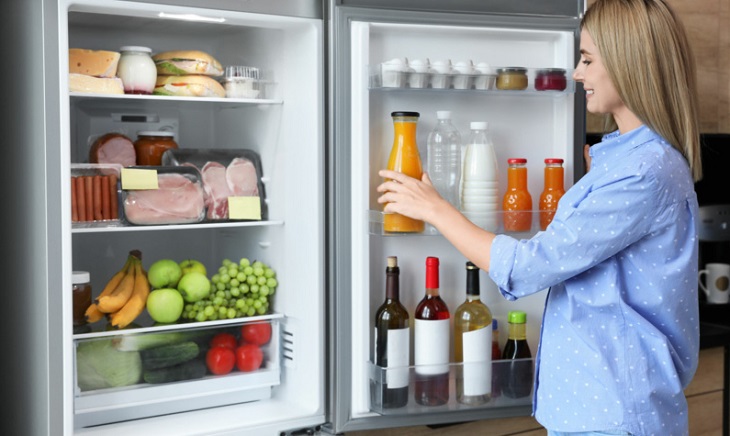
Hopefully, these 20 tips will help you organize your fridge more efficiently, keeping it neat, tidy, and well-stocked with your daily essentials.


